There are many charming terrarium plants out there, but some are more likely to break your heart than others.
It’s not always easy to tell which plants are going to be finicky, temperamental, or actually enormous when they grow up (speaking from experience). But we’ve made those mistakes for you!
After years of crafting terrariums, we’ve curated a trusted shortlist of plants that look beautiful and thrive in any setup. These are the go-to plants we rely on time and time again.
Let’s see what makes the cut!
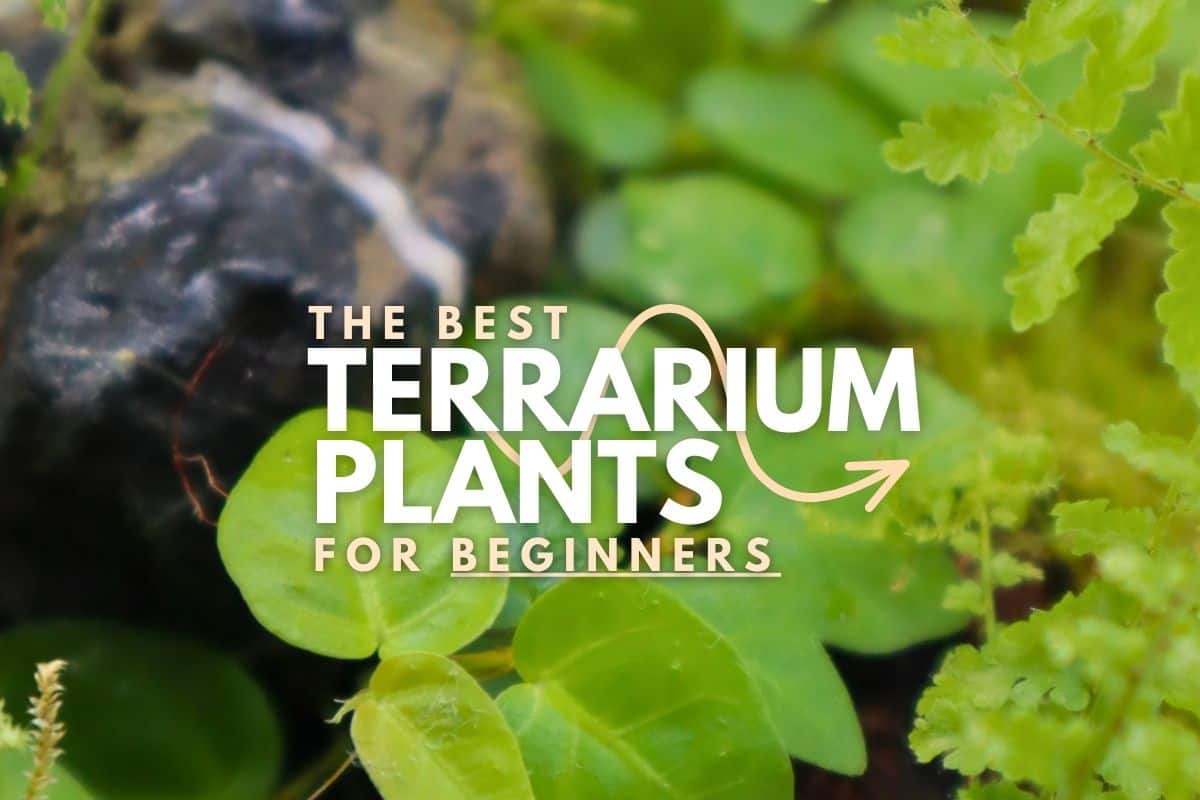
Terrarium Tribe is reader-supported. When you purchase through links on our site, we may earn an affiliate commission (at no further cost to you). 💜
How to Choose Plants for Terrariums
Okay, let’s begin by narrowing down our (rather extensive) list of options.
The natural first step is to choose from the range of closed terrarium plants, i.e., plants that love humidity, moisture, warmth, and indirect sunlight.
But, of course, not all tropical plants will be a good fit. Figuratively and quite literally.
So, what makes a closed terrarium plant…the best?
- Small plant size – You’re typically working with limited space, so small plants and miniature varieties are more suitable.
- Easy care – Any plant parent knows some plants are way more straightforward to look after than others.
- Adaptability – Being tolerant of different moisture levels and low light is very helpful in a closed terrarium.
So, as you’ve probably guessed, on this list, I’ll be sticking to small, unwavering tropical plants that are almost guaranteed to thrive.
Next up, we’re deep-diving into each of these terrarium plants (and giving our top recommendations for each!).
The Best Terrarium Plants
1 | Nerve Plants (Fittonia)
Let’s channel our inner Julie Andrews and start at the very beginning (it really is a very good place to start).
Known for its striking, contrasting venation and amazing colors, Fittonia is the quintessential terrarium plant and absolutely perfect for beginners.
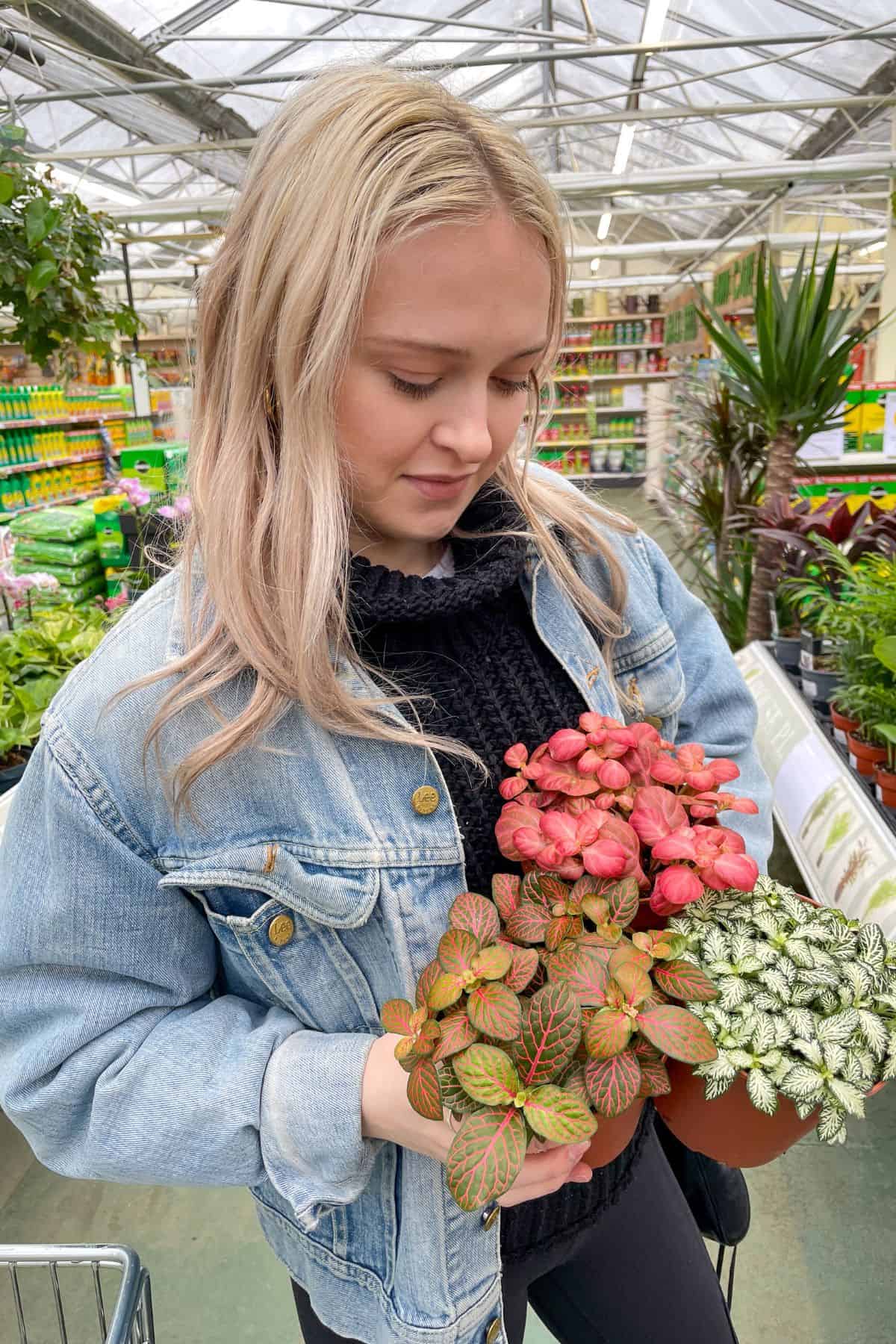
They’re fabulously striking and super easy to care for.
A Nerve Plant will tell you when it needs more water. A plant with dramatic flair, it will literally faint and spring back to life once it’s had a drink.
Easy to interpret = easy care.
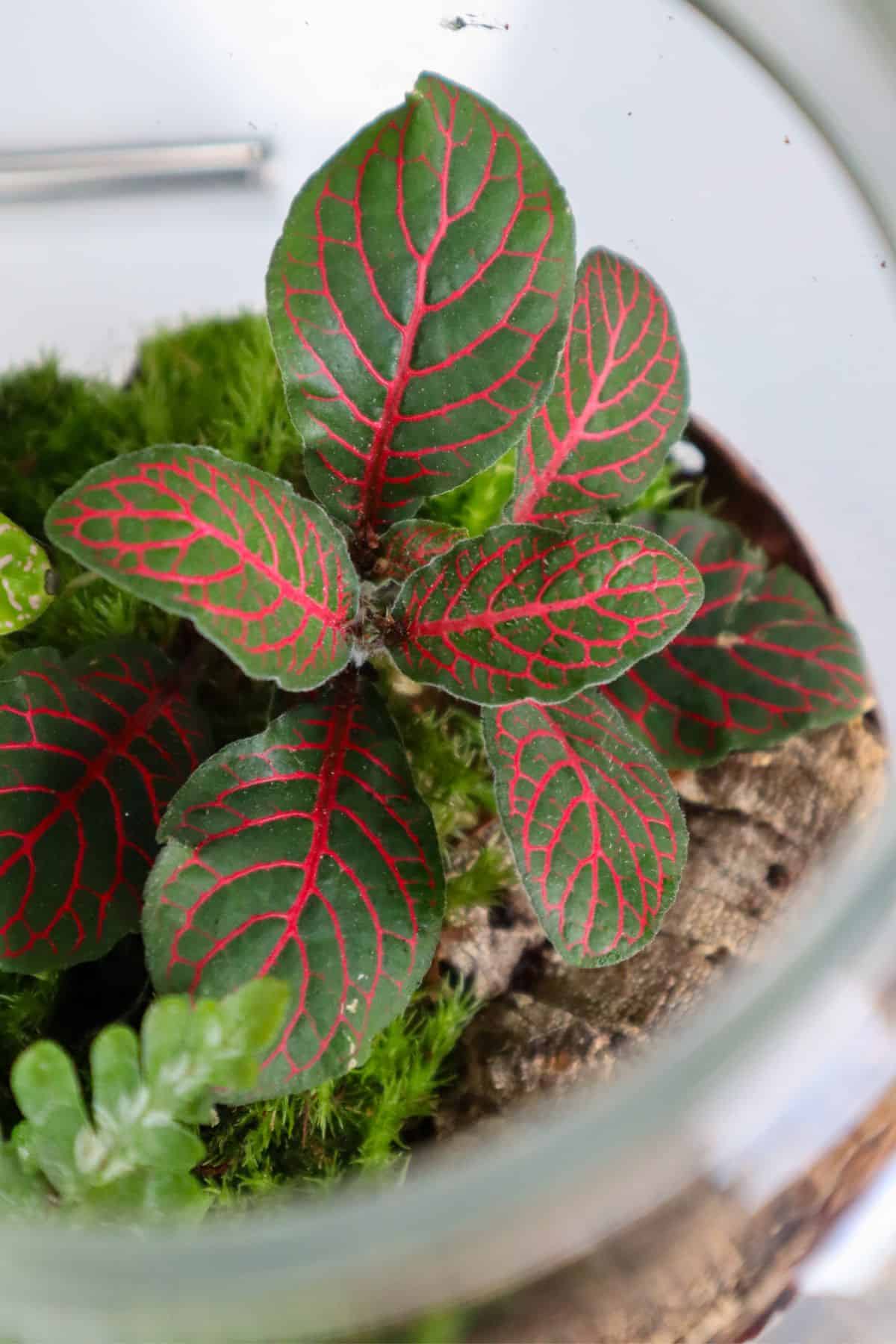
2 | Syngonium
Oh Syngonium, the unsung terrarium hero.
This one is for you if you’re a fan of bold colors, funky leaf shapes, and remarkable variegation (who isn’t?!).
This beautiful species often gets overlooked on terrarium plant lists, and I cannot understand why.
Both stunning and easy to care for, they’re terrarium plant superstars, and it’s time to give them their moment in the limelight. And with literally 30+ species and likely hundreds of exciting varieties, there’s something for everyone.
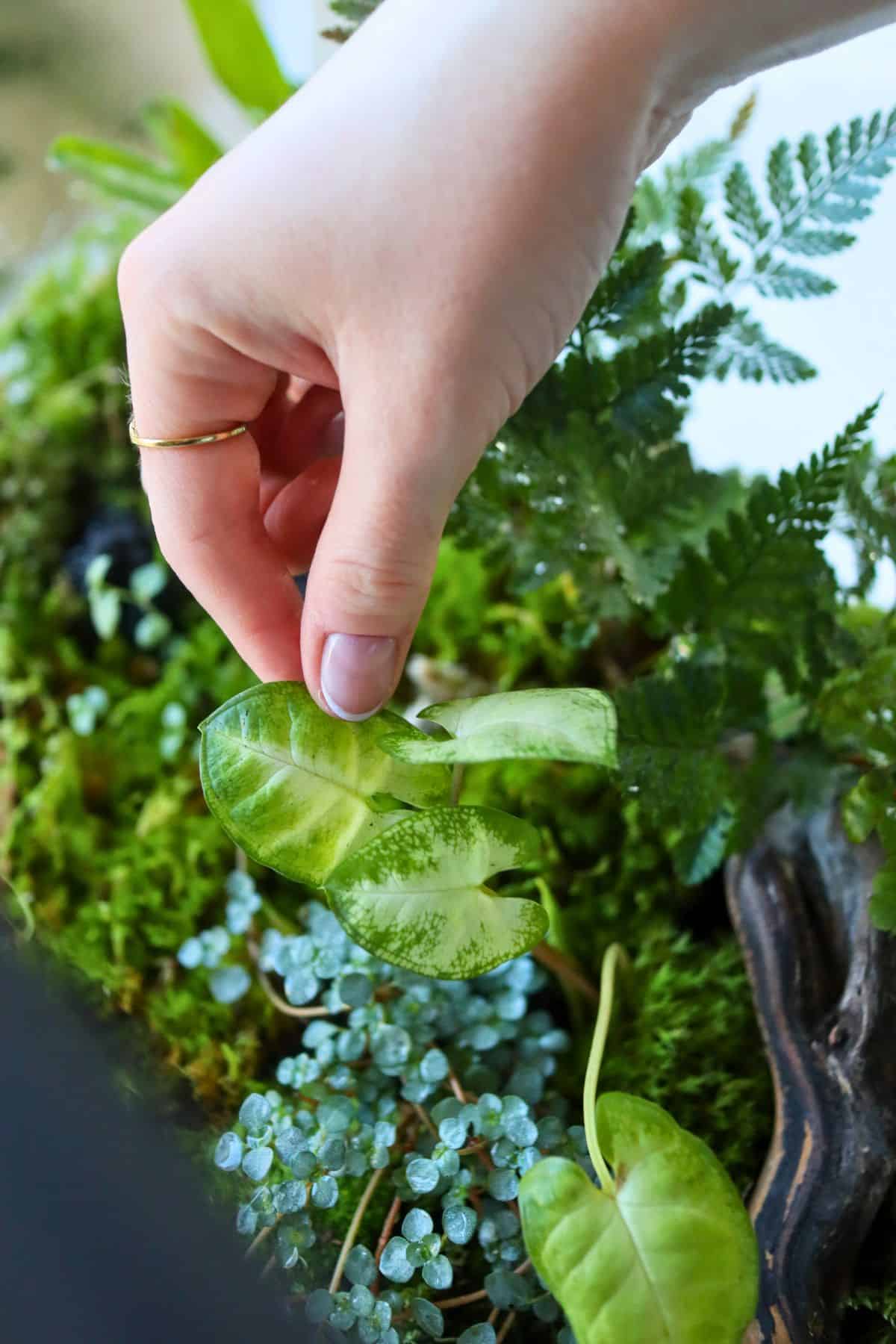
You could go for something pretty in pink like the ‘Neon Robusta‘ or a blood-red devilish delight like the Syngonium erythrophyllum ‘Llano Carti Road.’
3 | Pilea
Known for being easy-to-care-for houseplants, Pilea are even easier terrarium plants.
They fit nicely into two functional categories, depending on what you need for your project:
1 | Larger feature plants with interesting foliage – Pilea involucrata (Friendship Plant), Pilea mollis (Moon Valley Pilea), and Pilea cadierei (Aluminum Plant).
These kinds of Pilea will be planted terrestrially as the main event.

2 | Dainty accent plants – Pilea glauca (Silver Sparkle), Pilea depressa (Baby Tears).
These plants are typically the last thing to add to a terrarium. Just pop a few cuttings wherever you’d like to add some texture, and over the coming days and weeks, they’ll root up and settle in.
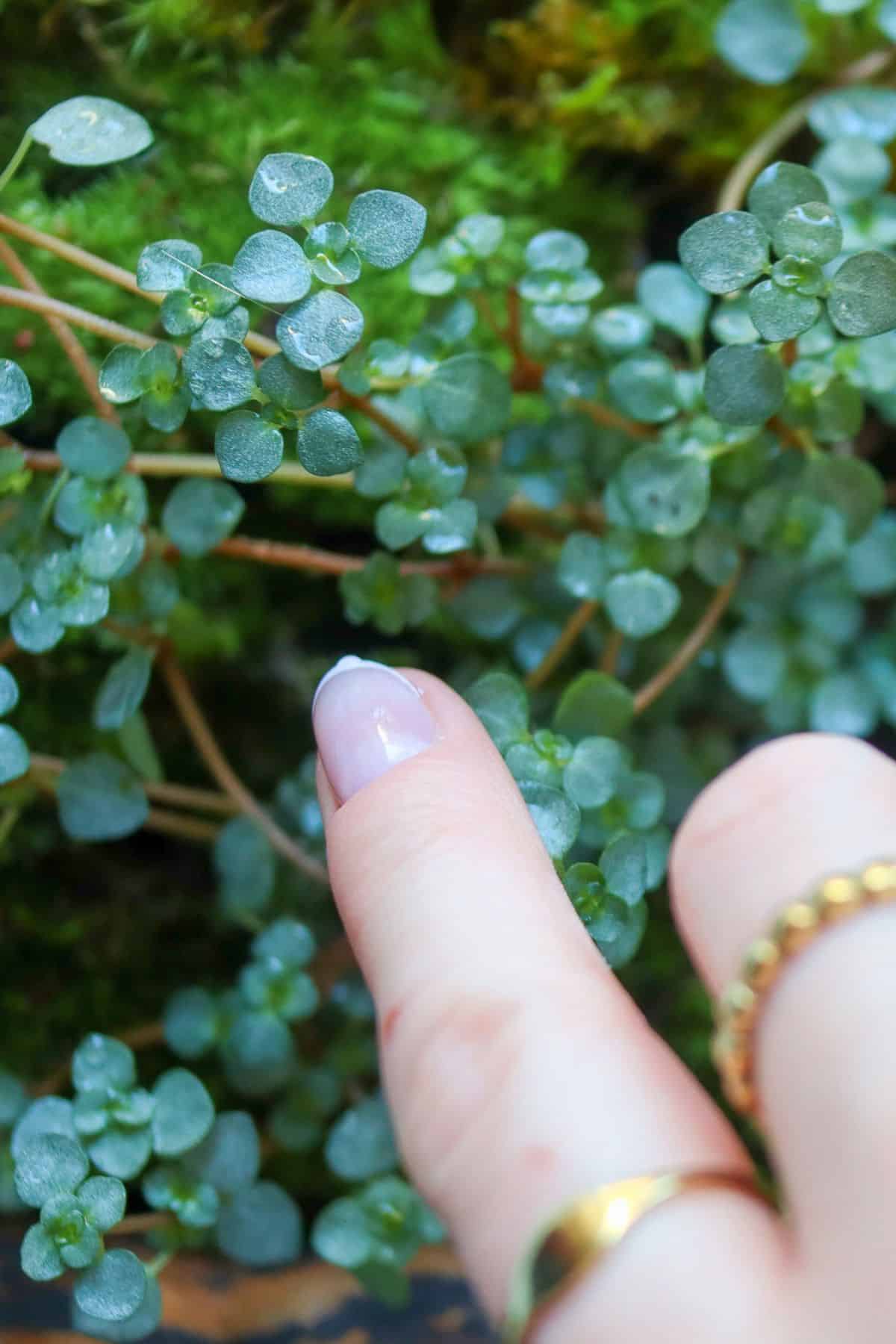
4 | Lemon Button Fern
Ferns are almost universally great terrarium plants, or rather, more specifically, well-behaved ferns are.
Though we use many different ferns (honestly, they’re our bread and butter), the Lemon Button Fern is arguably the most versatile of all. It’s easily divided into small yet tall strands of fronds – a great way to add some verticality.
It’s super reliable, too. We’ve never had problems with these taking in terrariums.
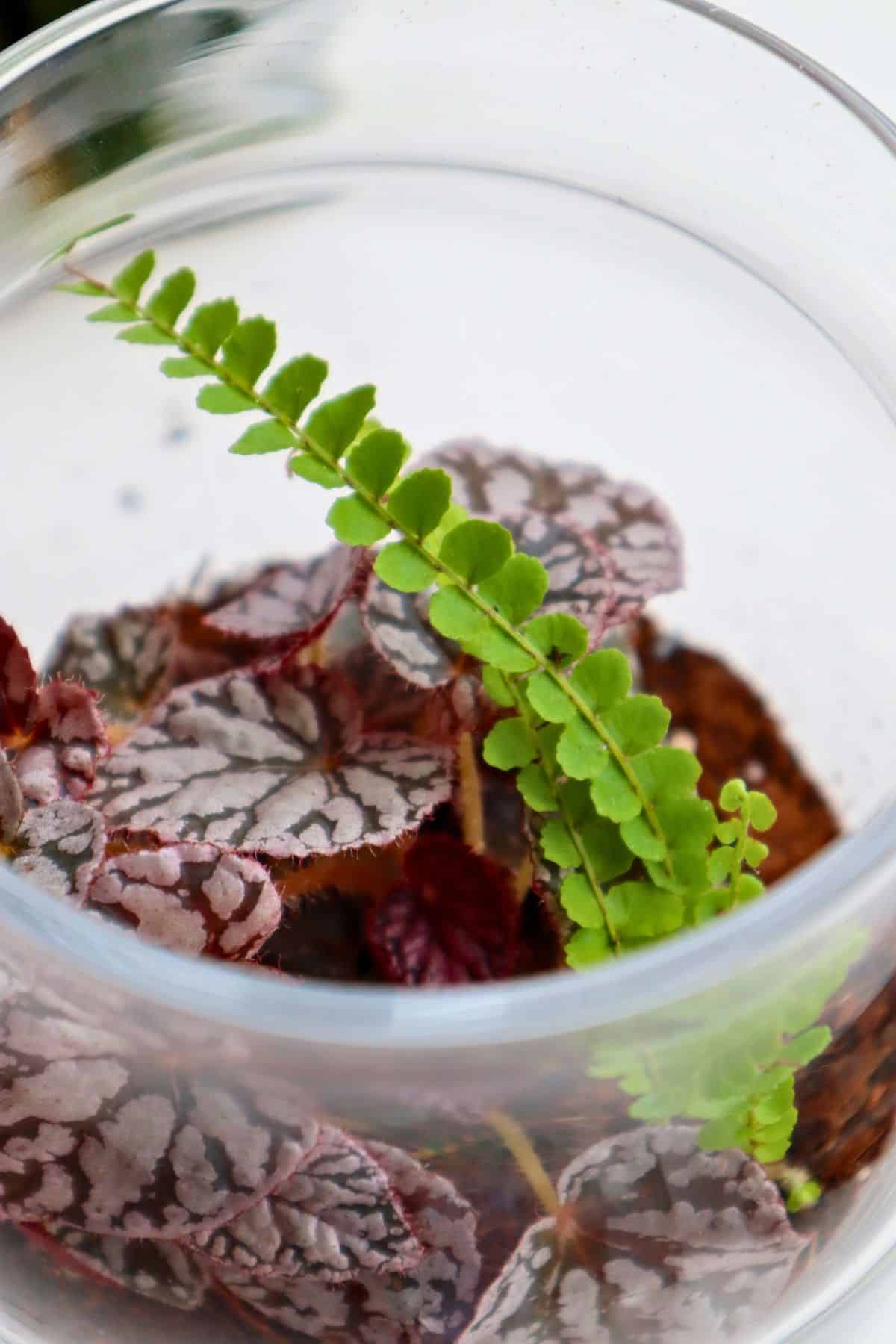
5 | Creeping Fig (Ficus pumila)
Okay, I get a little too enthusiastic about this plant. But you’ll soon understand why.
Ficus pumila is arguably the easiest terrarium plant there is. Planting? No need! All you need to do is carelessly drop a cutting or two in the container, and it will do the hard work for you.
It roots up and grows ridiculously quickly in a humid environment, filling your terrarium with adorable green leaves.
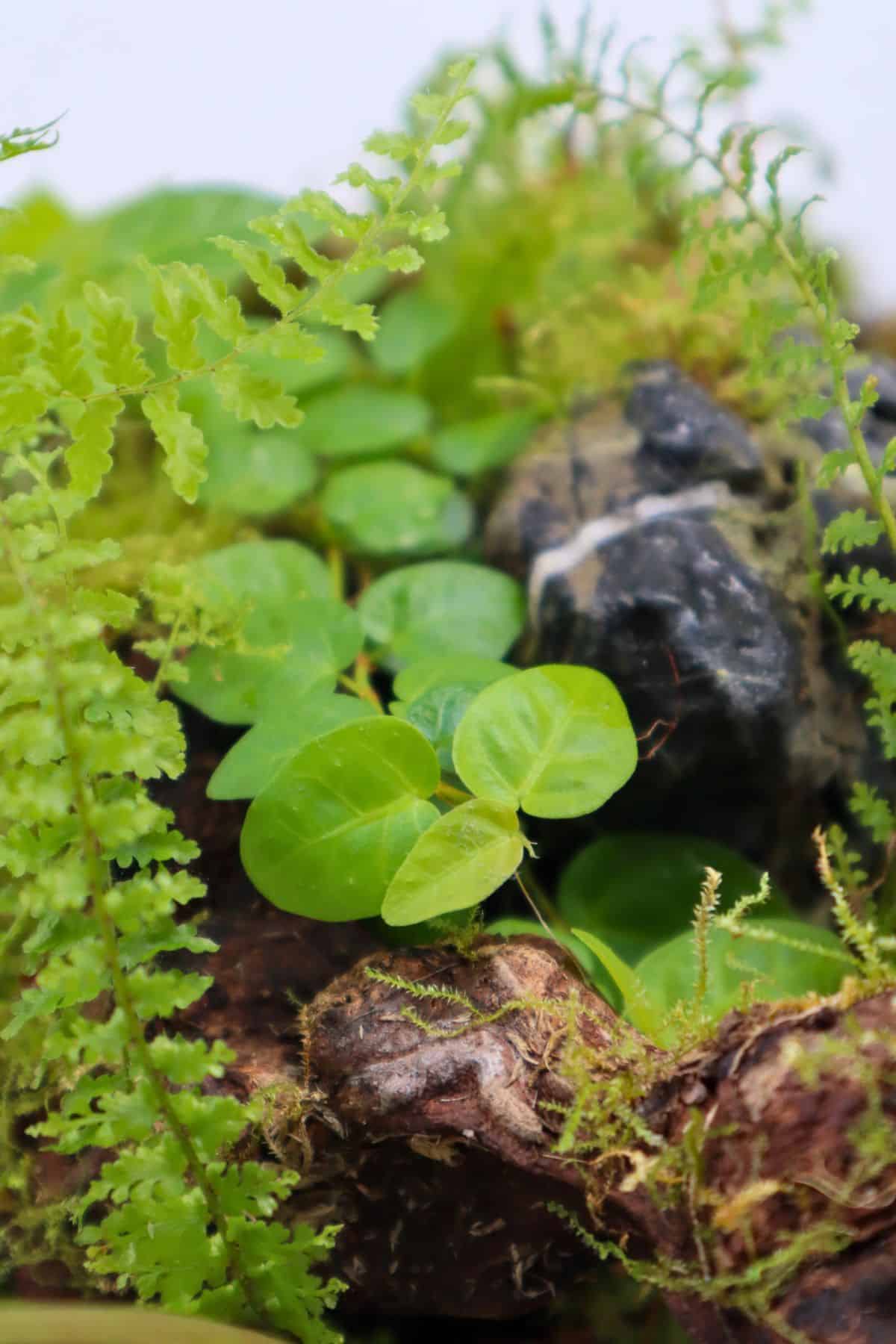
6 | Peperomia
Pretty much the entire Peperomia genus is terrarium-ready, and there are a lot of them.
With a taste for indirect light and a love of humid conditions, it’s such a set-and-forget genus. You know they will be happy in a terrarium, so you can leave them to do their thing stress-free.
They can be categorized broadly into vines, foliage, and large, and I’ll give you a few examples for each.
- Vines – the genus is full of trailing vines with perfectly rounded leaves. Plants like Peperomia ‘Pepperspot’ (String of Coins), Peperomia prostrata (String of Turtles), and Peperomia rotundifolia (Trailing Jade) are marvelous.
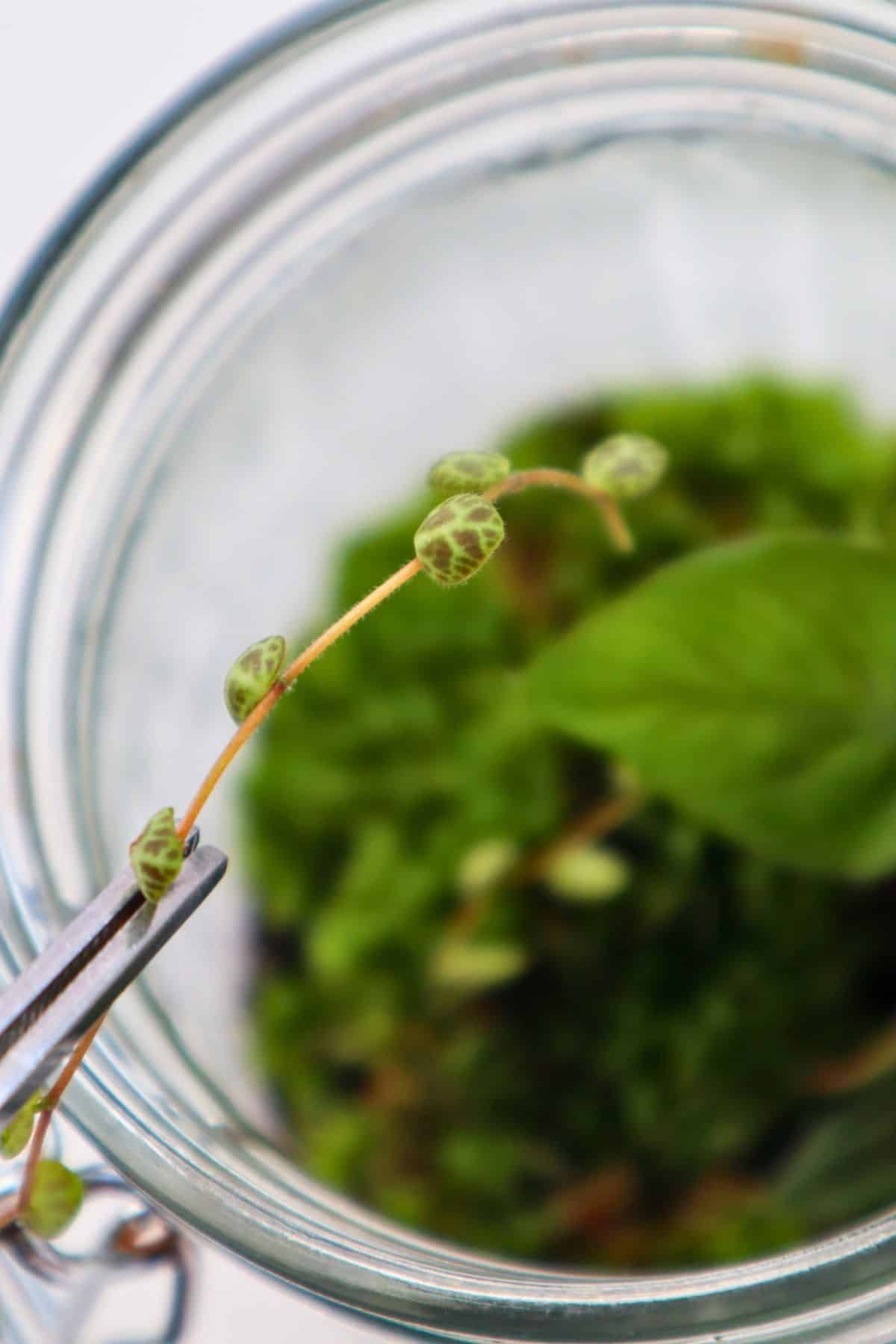
- Foliage – Pretty feature plants such as Peperomia caperata ‘Rosso,’ and Peperomia albovittata ‘Piccolo Banda’ will add an interesting dimension to your project.
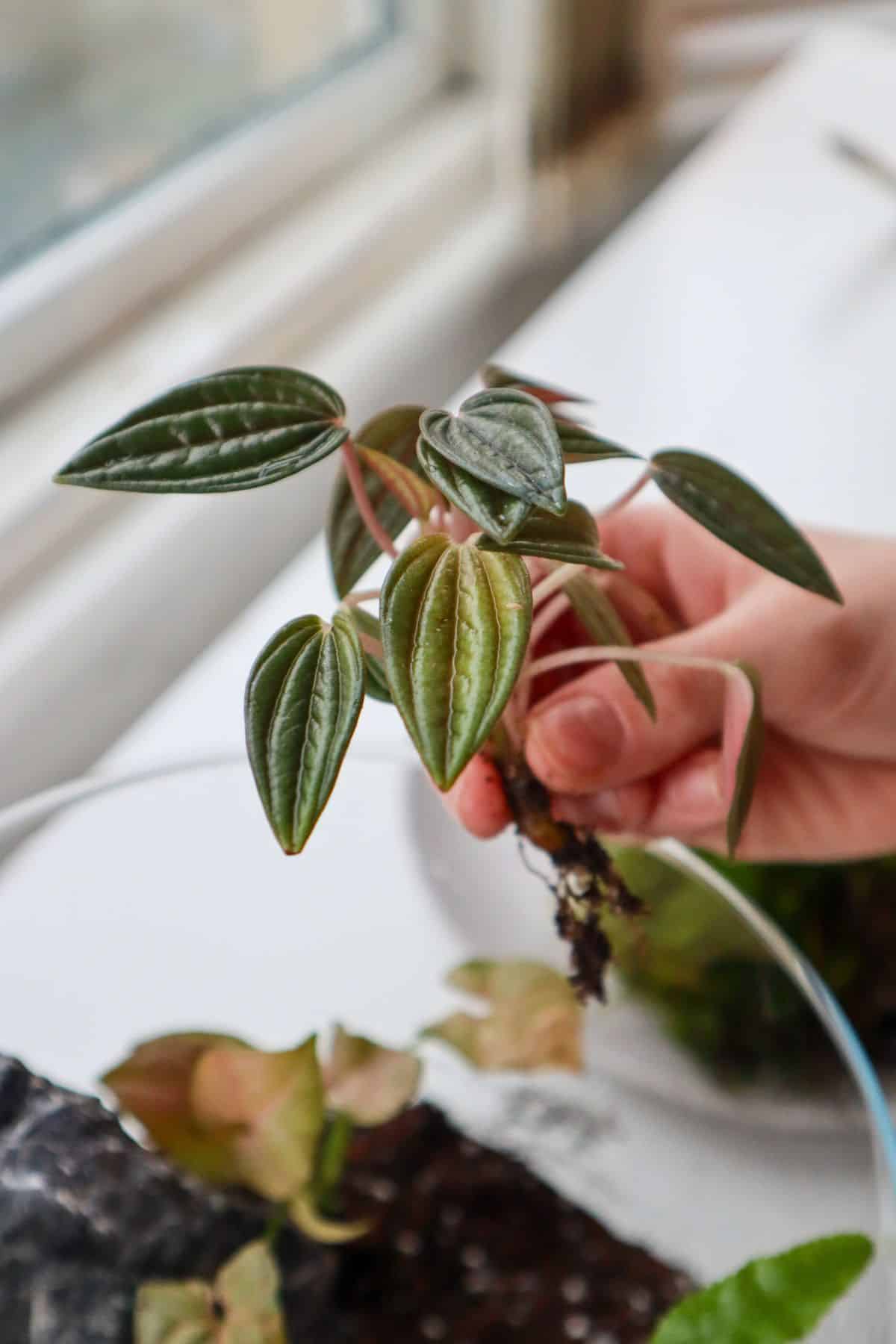
- Large – Peperomia with broader, glossy leaves, such as Peperomia obtusfolia (Mini Rubber Plant) and Peperomia ‘Ginny,’ make a beautiful statement.
I could go on and on, but this is plenty to get you going, and I’m beginning to grow grey hairs.
👉 Shop terrarium Peperomia on Etsy.
7 | Selaginella/ Clubmoss/ Spikemoss
Selaginella is a unique genus, and its somewhat weird features make it a perfect choice for terrariums.
Both visually and characteristically, they can easily be mistaken for mosses or ferns. They behave like carpeting mosses, creating a thick mat as they grow, and like ferns, they’re spore-producing.
This can make Selaginella shopping rather challenging. As you can see by the title, they go by many names.
A great place to start is with Selaginella kraussiana (Golden Clubmoss). It has tiny, scaled green leaves. Perfect for a dense, lush ground cover.
And if you want a splash of contrasting color, my favorite is Selaginella uncinata (Peacock Fern), which looks similar to the kraussiana, but has dreamy iridescent blue tones.
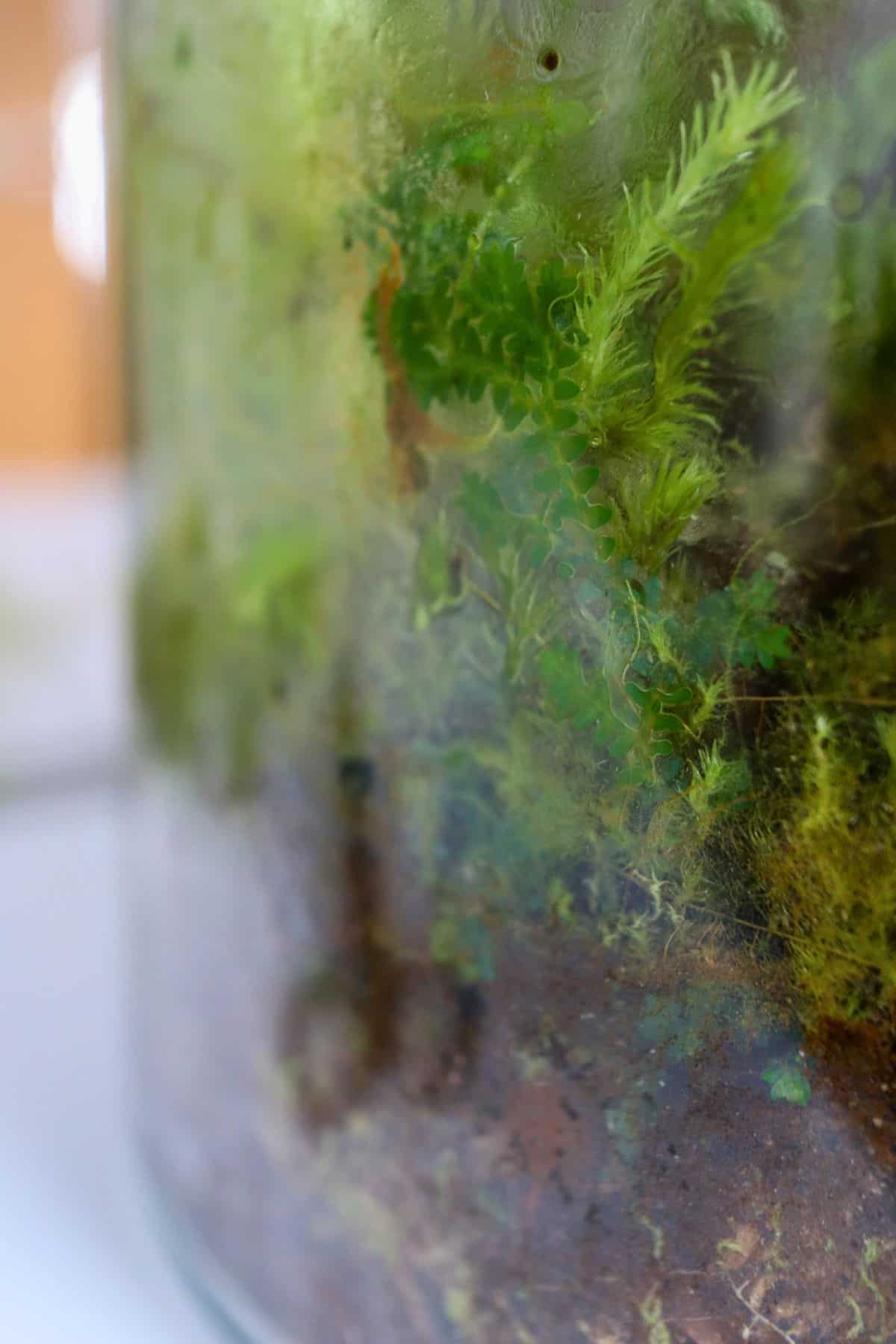
I’ve honestly never known such a hardy plant.
When I bought a cutting, I pretty much forgot about it. It was on some moist sphagnum moss in a sealed Tupperware box in dim light conditions. When I opened it a few weeks later, it had nearly doubled in size.
8 | Polka Dot Plant (Hypoestes phyllostachya)
Honestly, the Polka Dot Plant is very similar to the Fittonia that we began this list with, despite evolving on other sides of the planet.
This plant has spots instead of venation and a tricker name to pronounce.
They come in various brilliant bright colors, with many combinations of red, white, pink, and green leaves. Sometimes the spotted variegation can even blur into patches.
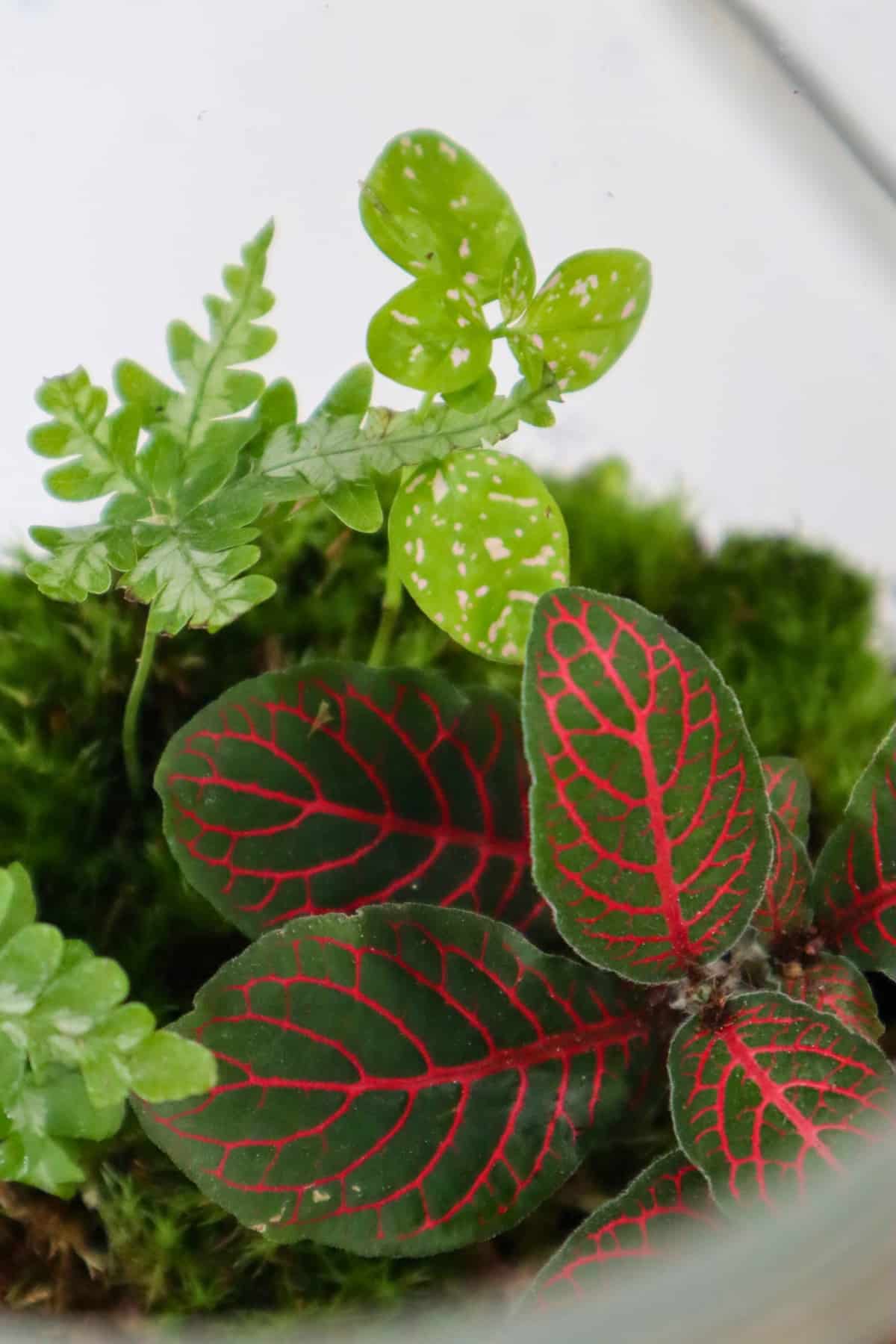
And similarly to Fittonia, it’s super easy to care for in a terrarium. It loves a warm, moist environment, so you can’t go wrong with it.
👉 Shop Polka Dot Plant on Etsy.
9 | Moss
Moss just needs a moist, humid environment (with good indirect light) to thrive, so the closed terrarium will do the hard work for you.
Keep it moist, and you’ll be rewarded with lush green vibrancy.
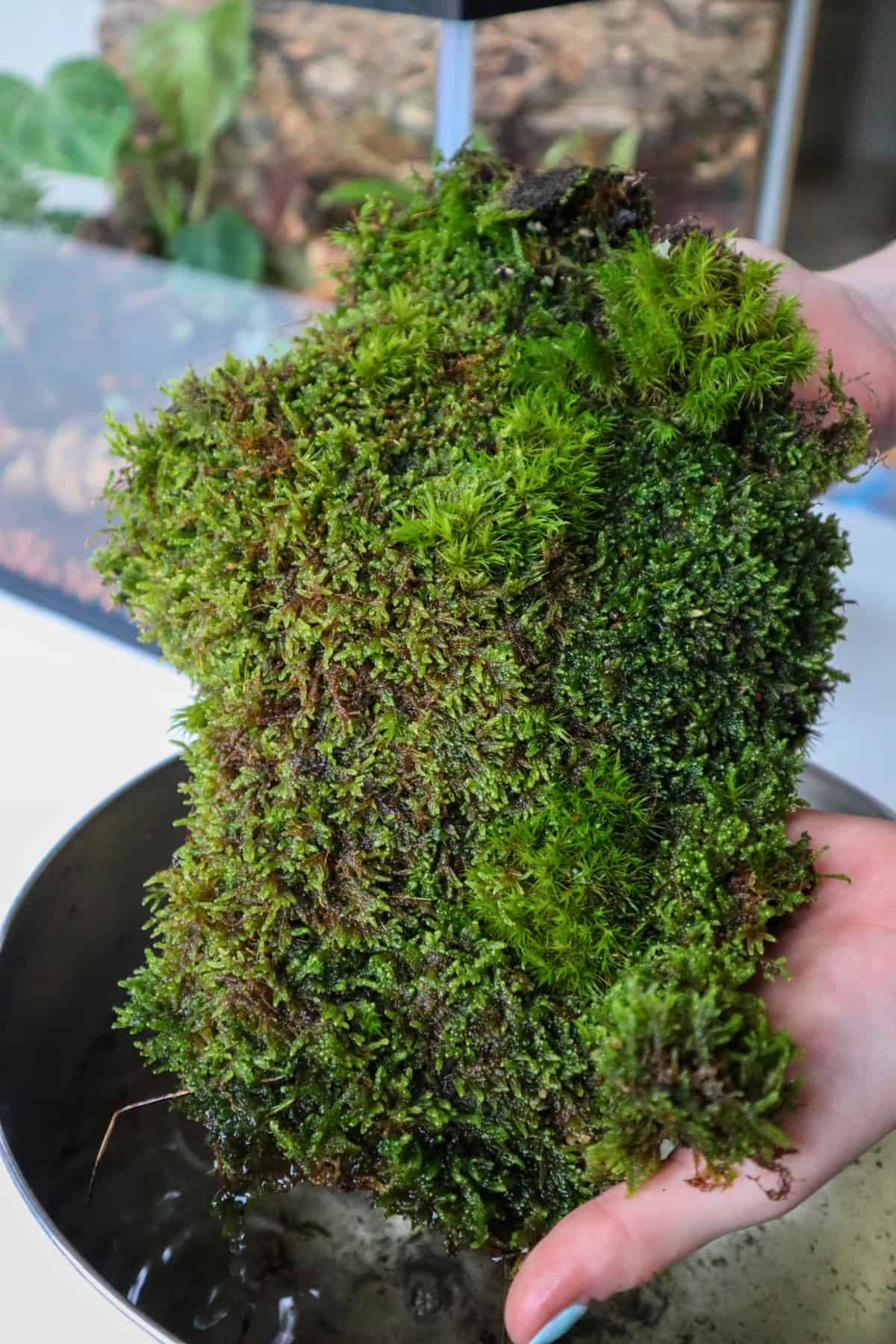
No roots = no risk of root rot.
There are two main types:
- 1. Sheet moss (e.g., Hypnum Moss) is great for beginners; it’s effectively a ready-made carpet that will cover the ground of your terrarium. Easy! You can grab some Live Sheet Moss on our store.
- 2. Clumpy moss (e.g., Cushion Moss) is gorgeous but more challenging. Not in terms of care, but in that it’s more challenging to place. It has a thick, fibrous underside that holds the moss together, which needs to be trimmed off; once it’s off, it’s tricky to hold the moss clumps together as you place them. Shop Cushion Moss.
Ultimately, you can choose whichever moss you fancy, as both sheet and clumpy mosses will thrive. But if you’re going for a clumpy moss, you might need a pair of aquascaping tweezers to make the job easier.
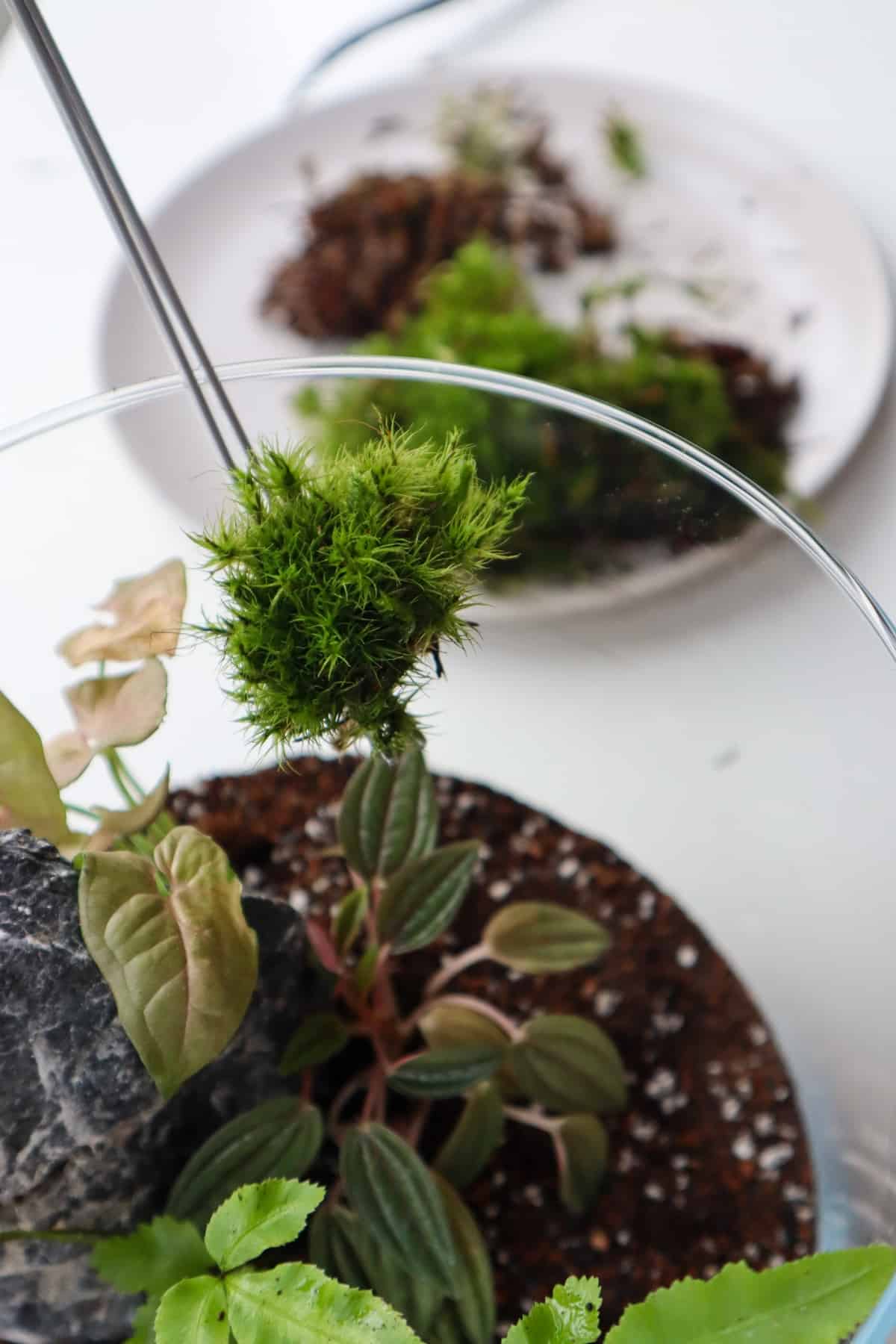
Unless you’re up for a real challenge, stay clear of aquatic mosses like Java Moss – they need extremely humid terrarium conditions that are hard to achieve.
👉 Check out our full range of moss for terrariums on our store.
Plants Beginners Should Avoid
Surprised you haven’t seen Prayer Plants, Jewel Orchids, and Air Plants on this list?
Despite being a good fit for closed terrariums, they’re far more sensitive to airflow.
That means you need to keep a closer eye on them and take the lid off every once in a while, which means you’ll need to rebalance the humidity and water content more.
So they are good terrarium plants, just not the most straightforward.

Carnivorous plants have no place in this article either. While some are more suited to terrarium life than others, they’re anything but beginner-friendly (in fact, Venus Flytrap terrariums are almost impossible).
Finally, avoid cacti, succulents (such as a jade plant), and other arid plants like the plague.
Because these guys prefer dry conditions, they’d quickly struggle inside a closed glass container.
Instead, they will need an open terrarium, which isn’t technically a terrarium at all, but we let them off because they’re cool. Feel free to join the dark side if that sounds more like your thing.
It’s Your Turn
What’s been an easy terrarium plant for you? Share your knowledge in the comments! After all, having hands-on experience with these plants reveals which are effortless and which are challenging.
Have any plants surprised you, for better or worse?
Now that you have a list of easy terrarium plants, why not check out our beginner’s guide, How to Make a Terrarium?
Or better yet, dive straight into our collection of high-quality terrarium materials.
Till next time x

Excellent article. I am about to start a Halloween themed terrarium and your information has helped me a lot. Thanks!
Very interesting article
With regard to cushion moss how much of the underside do you remove? On some of my builds I would of loved less of the underside but was worried about removing it. Is there a point to where you can trim to?
Thanks in advance for any info
Hi Darrell, you can trim as much as you like and the moss will be just fine – I’m fairly liberal with the scissors! The only issue is that the more you trim the less it all holds together making it difficult to place.
I am trying to start up a terrarium and this article was extremely helpful. Thanks for all of the info.
My PK class is going to make a terrarium for a science fair project. This was excellent information for them and what plants would work best.
My problem has always been that these plants are too happy and everything over grows so fast. Stopped here on my way to maintenance tips, haha.
Hahah that’s definitely a better problem to have!
Nice list for beginners but if one doesn’t mind spending a little more, there are some other plants that are just as easy but not so common to find. They’re also not cheap, but then again, what is these days?
Ficus. sp. Panama – very small crescent shape leaf, not a fast grower.
There are some very small species of vining Philodendrons that have bromide popular with those who keep vivariums for dart frogs and tropical geckos. Many are not yet classified so their names tend to reflect their origin.
Philodendron Chinchamayense, P. Mini Santiago ( this one has lovely leaves that look quilted). All grow fairly slowly and have very small to tiny leaves.
Pepperomias like P.aff bicolour ( origin Ecuador) and P.emarginella which has very tiny leaves and looks something like Baby tears (S.soleirolia) would if it was a vine.
There are also a few gesneriads that do nicely. I like Pearcea hypocyrtiflora for its colouring.
Most of my terrariums so far are screen top vivariums that are intended eventually to house tropical fauna too, but I’m also working on some closed small ones.
Great suggestions!